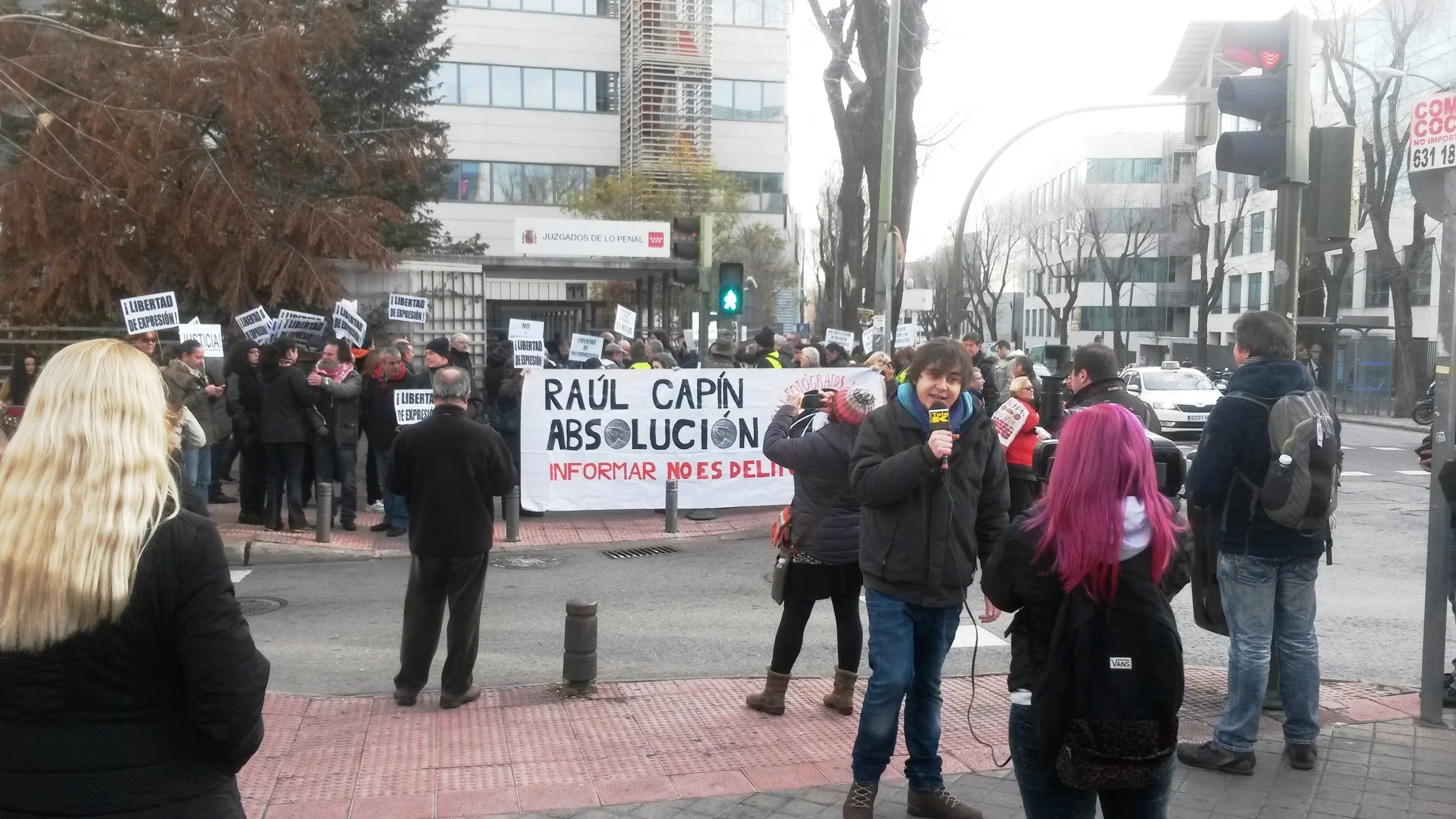Echoes & Algorithms: Cognitive Occupation - AI, Influence, and the New Machinery of Narrative Warfare
Echoes & Algorithms is a mini-series delving into the evolving relationship between grassroots journalism and artificial intelligence (AI), exploring how AI influences narrative authenticity and sparking necessary discussions about the future direction of grassroots journalism organizations like Weave News amidst technological advancements. This installment in the Echoes & Algorithms series marks a shift from theory to field analysis, examining real-world operations of AI-driven influence.
“The most important weapon today is social media.”
— Benjamin Netanyahu, 2025
The frontline has shifted
War has always been about control: of territory, of resources, of the story. But when Israel’s prime minister called social media the nation’s “eighth front” at a Jerusalem event in August, something subtle yet seismic occurred: the frontline dissolved into our pockets. The battlefield became the feed.
“When a government seeks to ‘deliver GPT framing results’ favorable to its interests, it is effectively trying to rewrite the probability distribution of meaning. Truth becomes something to be optimized. This is not censorship in the classic sense: no one needs to delete the article that contradicts the narrative if the AI model quietly learns not to generate it. Cognitive occupation works by preemption. It does not need to silence; it curates. It trains the machine so that dissent never reaches the threshold of statistical plausibility. The result is a soft rewriting of reality: a world where the boundaries of truth and propaganda blur at the level of computation.”
In its 2025 budget, Israel allocated hundreds of millions of shekels to projects designed not for military hardware but for narrative dominance. Newly disclosed foreign agent filings revealed that the Israeli government contracted U.S.-based firms such as Clock Tower X - led by Brad Parscale, former campaign manager for Donald Trump - to shape global discourse through social platforms and even through artificial intelligence (AI) systems like ChatGPT and Gemini.
Under initiatives known as Project 545 and Project Esther, teams of influencers, algorithmic specialists, and AI consultants are being mobilized to optimize search results, reframe conversational AI outputs, and seed social media with pro-Israel narratives. The goal: fifty million monthly impressions, primarily targeting Gen Z audiences across TikTok, Instagram, and YouTube.
If earlier propagandists sought to persuade through argument (however misleading or disingenuous), today’s campaigns operate at a structural level: reengineering the systems through which persuasion occurs. What we are witnessing is not simply a contest over stories, but a battle over the architecture of sense-making itself.
For five installments, Echoes & Algorithms has followed the gradual merging of AI and journalism: from questions of authenticity and authorship to the politics of attention and the automation of ideology. The events unfolding now represent the logical extension of that trajectory. Ideology has been industrialized. Truth has become a programmable commodity.
The vectoralist class, those who control not just production but the vectors of information, as McKenzie Wark describes, has evolved into something new: a neural narrative complex, where governments, corporations, and media conglomerates collaborate to weaponize cognition itself.
The frontline has shifted. The war is cognitive.
The mechanism of cognitive occupation
Cognitive occupation does not arrive with tanks or sirens. It arrives as optimization - invisible, frictionless, ambient. Where twentieth-century propaganda sought to convince, 21st century propaganda seeks to configure. Its power lies not in content but in architecture: the design of the algorithms that decide what becomes visible, credible, or thinkable. When those infrastructures are manipulated, occupation expands beyond the spatial, taking on informational and affective dimensions. It becomes infrastructural. This development has crept in for some time under the Trump administration with globally relevant figures like Larry Ellison, whose AI and media empire continues to grow.
The process of cognitive occupation proceeds in a number of interrelated ways:
1. Infrastructural Propaganda
In the traditional model, propaganda was message-driven, operating through the kinds of slogans, posters, and broadcasts we associated with the great powers who dominated the past century. Today it is system-driven. Search engine optimization, algorithmic amplification, and platform recommendation loops function as silent editors of public consciousness. When firms like Clock Tower deploy predictive AI systems such as MarketBrew to “improve the visibility and ranking of relevant narratives,” they are not producing journalism; they are producing conditions. Visibility itself becomes a weapon. What distinguishes this new form of influence is its subtlety. Propaganda is no longer a voice shouting orders; it’s the architecture of the room you’re standing in, the lighting that makes one object shine while another fades into shadow. The algorithm is not a messenger, rather it is the message.
2. The Capture of Generative AI
The attempt to influence large language models (LLMs) like ChatGPT marks a deeper epistemic shift. Generative AI systems don’t merely summarize existing knowledge, they synthesize new linguistic realities from the probabilistic patterns of their training data. When a government seeks to “deliver GPT framing results” favorable to its interests, it is effectively trying to rewrite the probability distribution of meaning. Truth becomes something to be optimized. This is not censorship in the classic sense: no one needs to delete the article that contradicts the narrative if the AI model quietly learns not to generate it. Cognitive occupation works by preemption. It does not need to silence; it curates. It trains the machine so that dissent never reaches the threshold of statistical plausibility. The result is a soft rewriting of reality: a world where the boundaries of truth and propaganda blur at the level of computation.
3. Influencers as Infrastructure
If AI shapes cognition at the infrastructural level, influencers shape it at the emotional one.
Initiatives like Project Esther formalize what marketing culture has long intuited: that authenticity itself can be monetized. The influencer becomes a soldier in plain sight without uniform or slogan; they “fight” purely through tone, posture, and cadence. In this sense, social media platforms have perfected the alchemy of persuasion. The message does not feel like propaganda; it feels like friendship. The feed is warm, intimate, and familiar. And yet, like any occupied territory, it is mapped, monitored, and monetized. This is the genius of cognitive occupation: it doesn’t look like control. It looks like connection.
Resistance and reclamation: grassroots journalism in an occupied mindscape
If the occupation is cognitive, then journalism itself becomes a form of counterinsurgency not through violence, but through unlearning. Grassroots journalism has always been about the politics of attention: who is seen, who is heard, who is believed. In an environment engineered for manipulation, that mission takes on a new urgency. The task is no longer just to tell stories about resistance but to practice resistance in the act of storytelling. In a media ecosystem optimized for seamlessness, transparency becomes a rupture.
Grassroots journalists in Madrid, Spain, covering the story of a photojournalist who was charged under the country’s “Gag Law” after covering a major protest. (Photo: John Collins/Weave News)
To reveal your methods, your sources, your human imperfections, is to expose the machinery behind the message. The illusion of frictionless truth, the aesthetic of “AI confidence”, depends on opacity. Every disclosure, every admission of uncertainty, becomes a small act of rebellion. Transparency is not weakness. It is the reclamation of narrative sovereignty and a way of saying: this story was made by hands, not systems.
Photo by Zulmaury Saavedra on Unsplash.
In my last Echoes & Algorithms piece, I argued that meaning lives in friction. That remains true. The predictive logics of AI depend on pattern and repetition. Grassroots journalists can subvert that by writing against the grain of expectation and therefore reintroducing unpredictability. The language of resistance has always been jagged, contradictory, embodied. It stutters. It hesitates. To insist on that texture, to let the human irregularities remain visible, is to resist being assimilated into the smooth grammar of algorithmic optimization. Noise, in this sense, is not the opposite of clarity. It is the sound of freedom.
But resistance cannot survive on critique alone, it must construct alternative frameworks. If cognitive occupation is infrastructural, then liberation must be infrastructural, too. Grassroots journalism can begin constructing small-scale alternatives: local archives of oral history, community-trained datasets, AI literacy workshops that treat technology not as a neutral utility but as a contested terrain. Imagine AI tools trained not on scraped data but on consented narratives, novel datasets born of reciprocity rather than extraction. Imagine collective refusal encoded as a feature, not a bug. These experiments may seem modest beside billion-shekel campaigns, but they are radical in form: they reassert the right to design the conditions of knowledge.
A spark for liberation
The occupation we face is not solely of physical territory and resources but of sense. Its checkpoints are search bars. Its drones are recommendation engines. Its soldiers are synthetic voices rehearsing empathy for profit. And yet, resistance persists in every unoptimized act of witness, every imperfect sentence, every story that refuses to fit the feed. Grassroots journalism, slow and unscalable, remains a site of friction in a world that prizes frictionlessness. Perhaps that is its most vital role now: to remind us that thought cannot be automated, that truth cannot be optimized, and that attention, once reclaimed, is a form of freedom.
If the occupation is cognitive, then every act of remembering, of questioning, of telling otherwise, becomes an act of resistance and a spark for liberation.




